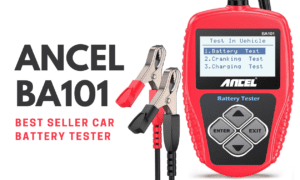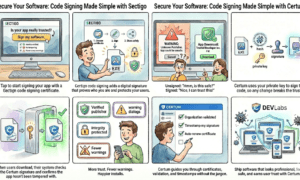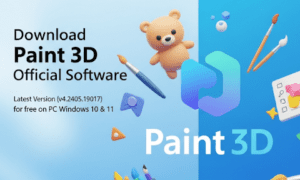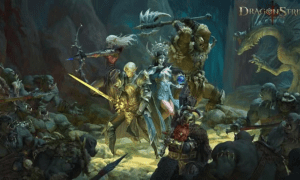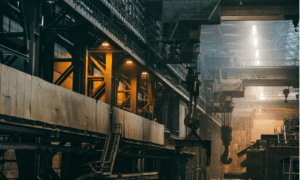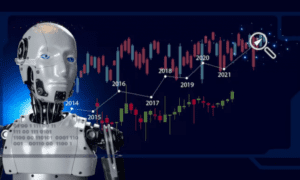You need custom exhibit designs to create a memorable impact at your upcoming trade show.
The modern business world demands companies to differentiate themselves more strongly than before. Custom exhibit design helps brands create memorable experiences that stand above others. According to recent data, the U.S. B2B trade show market is projected to reach $17.3 billion by 2025, exceeding pre-pandemic figures.
And here’s the thing…
Exhibit design determines whether you succeed or fail at trade shows. Working with professional exhibition booth designers will help get your brand’s message to reach your target audience.
What You’ll Discover:
- Understanding the Impact of Custom Exhibits
- Key Elements of Effective Booth Design
- Maximizing ROI Through Strategic Design
- Future Trends in Exhibition Design
Why Custom Exhibit Design Matters
Your custom exhibit design should combine visual appeal with immersive experiences to make visitors want to engage and remember your brand. In 2023, North America leads exhibitions with a market share of 35% making it hard to stand out in this competitive environment.
Think about it:
When visitors pass your booth you need to grab their notice in a short period of time. A custom-designed exhibit helps you:
- Stand out from competitors
- Communicate your brand message effectively
- Create memorable experiences
- Generate qualified leads
According to industry research, 94% of exhibitors will modify their exhibition activities within three years. The market’s dynamic nature has led companies to realize that uniform solutions do not work effectively anymore.
Strategic Design Elements That Drive Results
To build a successful custom exhibit, you need to consider several design aspects. Your display needs to look beautiful while also serving its purpose well.
Let me break it down for you:
Engaging Layout and Flow
Your exhibit design should take visitors on a planned route from beginning to end. This means considering:
- Traffic flow patterns
- Interactive zones
- Product demonstration areas
- Private meeting spaces
The high percentage of exhibitors cutting back on trade show participation demands effective use of available space. The design of your booth elements helps visitors move through your space to discover all your important information.
Brand-Centric Design
Your exhibit needs to match what people see when they think of your brand. This means incorporating:
- Your brand colors and visual elements
- Consistent messaging
- High-quality materials that reflect your brand values
- Custom lighting that enhances your brand presentation
Your exhibition space should visually depict your brand identity. All design aspects need to support one another to deliver a seamless brand experience.
Technology Integration
Here’s something most exhibitors overlook…
Today, technology serves as the foundation for modern exhibition design. Research shows interactive technology boosts booth activity numbers. Consider incorporating:
- Interactive touchscreen displays
- Virtual reality experiences
- Real-time social media integration
- Digital lead capture systems
But here’s the kicker…
Your chosen technology must support your desired outcomes. Integrate technology into your exhibit design only when it adds meaningful value. Every piece of technology you use needs to improve how visitors experience your space while advancing your marketing goals.
Maximizing Return on Investment
In 2022, the meeting and event planning sector had 132,000 workers, yet trade show attendees faced strong competition for attention. To ensure your custom exhibit delivers real ROI, focus on these key areas:
Strategic Space Utilization
Your exhibit space is valuable real estate. The U.S. B2B exhibition industry returns to growth but expenses push us to use every available space wisely. Here’s how to maximize your space:
Design spaces that can handle different functions at various times during the fair. Use high elements to create visual interest while saving floor space. Design storage areas that won’t block your display space Develop a strategy to handle all types of business discussions both casually and formally.
Measurable Objectives
Show organizers find it hard to evaluate results because exhibitors fail to establish measurable targets upfront. Your custom exhibit design should support specific, measurable goals such as:
- Number of qualified leads generated
- Product demonstration completions
- Meeting scheduling success rates
- Social media engagement metrics
Staff Training Integration
What actually drives the success of a custom exhibit?
How your staff uses the exhibit design determines its success more than its physical appearance. Your exhibit should be designed with your staff’s needs in mind:
- Clear sight lines for monitoring visitor activity
- Ergonomic workstations for long show days
- Easily accessible product displays
- Create specific areas for customers to engage in various types of interactions
Due to a 12.6% decrease in U.S. B2B exhibition market attendance, companies need to maximize interactions with each visitor.
Future-Proofing Your Exhibit Design
Here’s something most exhibitors don’t consider…
Your custom exhibit should work well in different settings and handle industry changes. Since 94% of exhibitors plan modifications to their exhibits they need a design that can adjust.
Modular Design Elements
Create components that can be:
- Reconfigured for different show sizes
- Updated with new graphics or technology
- Adapted for various types of events
- Used in both in-person and hybrid settings
Sustainable Materials
With an increasing focus on environmental responsibility, your exhibit design should incorporate the following:
- Eco-friendly materials
- Energy-efficient lighting
- Reusable components
- Recyclable elements
Using eco-friendly materials helps protect the earth and creates positive brand impressions while saving you money in the long term.
Implementation Best Practices
Here’s what most people don’t realize…
Successful custom exhibit designs reach their full potential through proper installation. Trade show attendance volatility and financial constraints for 75% of exhibitors require you to optimize your investment at every event.
Pre-Show Planning
Your custom exhibit project needs effective planning before the trade show begins. Focus on:
- Teach all staff members how to set up and use the booth design elements
- Technical systems testing and backup plans
- Clear role assignments for team members
- Detailed setup and breakdown schedules
But there’s more to it than that…
During-Show Management
Your exhibit management strategy should include:
The team meets regularly to review performance data and modify their approach.
- Systematic lead capture and follow-up processes
- Real-time monitoring of visitor engagement metrics
- Flexible space utilization based on traffic patterns
Post-Show Evaluation
Finding ways to improve performance is the key to success.
Your success depends on tracking performance and breaking down the data you collect. After each show:
- Compare actual metrics against your objectives
- Gather feedback from staff and visitors
- Document what worked and what didn’t
- Plan improvements for future events
Making the Investment Count
Let me tell you something important…
Custom exhibit design requires a significant investment but brings back better results when executed properly. Here’s how to ensure you’re getting the most value:
Budget Allocation
Smart budgeting means:
- Investing in quality materials that will last
- Prioritizing elements that directly support your objectives
- Planning for maintenance and updates
- Building in flexibility for future modifications
Long-Term Value Creation
Custom exhibit design helps your brand build enduring value beyond single events. Consider these long-term benefits:
- Strengthened brand recognition
- Increased market credibility
- Enhanced customer relationships
- Improved lead generation efficiency
Taking Action: Next Steps
Ready to elevate your trade show presence?
Here’s your roadmap to success with custom exhibit design:
- Assess Your Current Position
- Review past trade show performance
- Identify key areas for improvement
- Define clear objectives and metrics
- Set realistic budget parameters
- Plan Your Strategy
- Research upcoming industry events
- Define your target audience’s personas
- Develop your key messages
- Create your measurement framework
- Partner with Professionals
- Look for experienced design teams
- Check their portfolio and references
- Discuss your vision and constraints
- Plan for long-term collaboration
The Time to Act Is Now
The exhibition industry keeps changing quickly which makes it harder than ever to stand out from competitors. With the right custom exhibit design strategy, you can:
- Capture more qualified leads
- Build stronger brand recognition
- Maximize your marketing ROI
- Stay ahead of industry trends
Trade show season demands special booth designs that get noticed by attendees. Begin creating your custom trade show display now to build a standout marketing tool for your events.
Quick Tips for Success
Before you go, here are some final insights to keep in mind:
Prepare your exhibit plans at least half a year ahead of important shows Prepare alternative technical solutions as standby options Teach your team members all information about the exhibit’s functions. Keep updating your design to follow current market trends.
Your custom exhibit becomes an important asset for your brand’s future development. Make it count.


